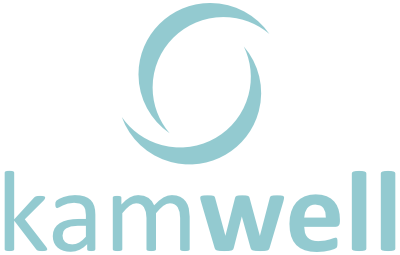
- BLOG
- General Wellbeing
Lessons From Literature: 3 Sources of Powerful Wellbeing Advice
Sometimes the most valuable guidance for workplace wellbeing is not found in research articles or studies, but in the experiences of others. Here we explore an artist’s tale of 4 friends, a creative director’s highlights from advertising, and a writer’s journey to understand the lost art of breathing.
The Boy, the mole, the fox and the horse by Charlie Mackesy
Charlie Mackesy is an artist whose novel encapsulates the foundations of wellbeing: kindness, compassion and understanding. “What is the bravest thing you’ve ever said?” asked the boy. “Help”, said the horse. This, Mackesy explains, was the origin for the book, which emerged in a conversation with a friend about their most courageous moment.
“The boy is lonely when the mole first surfaces. They spend time together gazing into the wild. I think the wild is a bit like life – frightening sometimes but beautiful,” he writes in the introduction. Mackesy is 56, but the story oscillates between profound wisdom and childlike innocence.
“What do you want to be when you grow up” the mole asked the boy, to which he responded “kind.” Mackesy’s portrayal of the human experience is a breath of fresh air for a world which is driven by having not being.
Yet, crucially, Mackesy conveys a painful awareness that our universal need for kindness is one we often forget to extend to ourselves. The mole whispers, “often the hardest person to forgive is yourself.”
He offers a comforting reminder that wellbeing is, at its heart, simple. “We often wait for kindness…but being kind to yourself can start now,” said the mole. Indeed, compassion for ourselves has never been more important as normality remains in the distance amidst the pandemic.
But the fox represents this part of us that struggles to acknowledge our pain, and projects that outwards to others: “If I wasn’t caught in this snare I’d kill you”, threatens the fox. But the mole wisely shows him that we can’t move forward if we refuse to confront what has hurt us: “If you stay in that snare, you will die” said the mole.
In this way, Mackesy encourages us to look inwards. His message is even more pertinent in recent months when we’ve been forced to reflect on our values.
In particular, he touches on the relatable crushing illusion that everyone’s lives are perfect except our own. The friends gaze at two swans “How do they look so together and perfect?” asked the boy. “There’s a lot of frantic paddling going on beneath,” said the horse.
So, this beautiful tale of vulnerability shows the strength we can gain in building one another up rather than tearing one another down: “Everyone is scared,” said the horse. “But we are less scared together.”
Mackesy invites us to recalibrate our worldview and integrate these powerful lessons into our daily life.
At the very end, he writes: “Just take a step. The horizon will look after itself.” What would our workplace look like if we heard this story or glanced at the illustrations before every day?
Creative mischief by Dave Trott
The value of this punchy and sharp creative manual lies in its lessons of survival about a cut-throat industry. There is no room for negative self-talk, second-guessing or crises of confidence. Our workplace wellbeing can suffer if we don’t believe in ourselves, but Trott’s advice for future generations of creatives is impactful and entertaining.
Before moving to New York to study art, Trott wasn’t very self-assured. But using a metaphor from The Wizard of Oz, he explains how everything changed. Everyone is terrified of the great Oz except Toto, the dog, who isn’t aware of the intimidating rumours about him.
Fearlessly Toto pulls down the curtain to reveal a little old man, and Oz admits he wouldn’t get any attention if he was himself. He needed smoke and mirrors:
“Put simply, he lets people’s minds do the work for him.
He lets their own minds create the stereotype they need to be frightened of.
They then live their lives in fear of the stereotype they themselves created.”
Trott realised the things he’d been afraid of didn’t exist in the real world, and this allowed him to progress. A powerful reminder that if you’re struggling in the workplace, sometimes all you’ve got to beat is yourself.
Offering advice about living in the present, he recounts the story of two Zen masters who met one rainy day to debate their styles of teaching. The second Zen master entered, and the first Zen master asked: “On which side of your shoes did you leave your umbrella?” The second Zen master immediately gave up and became a pupil of the first Zen master.
“By not knowing something as simple as that, he realised he had been thinking about the debate instead of actually being alive,” Trott writes. He goes on, “every moment is a new and unique experience that will never come again. And what do we teach our children? That two and two makes four, and Paris is the capital of France.
We aspire to live on autopilot.
To find a formula and stick to it.
To defend it.
As if we were frightened of being alive.”
Currently, we’re mourning the pre-pandemic world and hoping for its return in the future. But, right now is when the lessons can be learned, and wellbeing can truly be transformed. So, let’s savour these moments while we can.
In the book’s closing anecdote about problem-solving, he uses an analogy of rocks vs. water.
“Rock logic is: stay where you’re at and don’t move.
“Water logic is: try everything, see where it goes.
Just because you can’t see the immediate short-term benefit of something, doesn’t mean you shouldn’t try it.”
In other words, cultural change takes time. What works for one business won’t work for everyone, but be patient, and you will reap the rewards of a happier and healthier workforce.
Breath: The new science of a lost art by James Nestor
Since he can remember, James Nestor has struggled with a range of respiratory problems from snoring to apnoea. A decade ago, he had a transformative experience during a breathing class which triggered a quest to understanding the process that underpins life.
Our ancestors had enormous jaws, expansive sinus cavities and broad mouths, and, even more interesting, they all had straight teeth. When humans learnt how to cook food, their brains expanded, and airways became tighter. Fast-forward and we have crooked teeth and misaligned jaws. Nestor teaches us that “evolution doesn’t always mean progress.”
In his first lesson, he focuses on the adverse effects of breathing through your mouth: “Mouthbreathing, it turns out, changes the physical body and transforms airways, all for the worse.” Nestor discovers this through his own research and by participating in what he comically calls a “pioneering and masochistic 20-day study” at Stanford University.
The nose “heats, cleans, slows and pressurizes air so that the lungs can extract more oxygen with each breath. This is why nasal breathing is far more healthy and efficient than breathing through the mouth.” ENT surgeon Jayakar Nayak calls it “the silent warrior.” Sinuses release nitric oxide, a molecule that influences immune function, circulation and mood, which is why we can absorb 18% more oxygen than when breathing through our mouth.
However, 3 other steps are crucial for respiratory health. The first is exhaling. He cites a study which discovered that the greatest indicator of lifespan in 5,200 subjects was lung capacity. But altering our lung capacity is impossible, surely?
Quite the opposite. The answer lies in a full exhalation, which is something many of us have forgotten how to do as we live in a permanent state of hyperventilation (fast, shallow breathing). The life-changing power of the exhale is why the diaphragm is known as “the second heart.”
Second, we need to breathe slower, otherwise we deplete our bodies of CO2: “Carbon dioxide is the chief hormone of the entire body; it is the only one that is produced by every tissue and that probably acts on every organ.” In fact, the most efficient breathing rhythm is 5.5 seconds in and 5.5. seconds out.
Third, less is more. According to Indian yogis and Tibetan Buddhists, optimum health, longevity and endurance depends on fewer inhales and exhales in a smaller volume: “Breathing just over 20%, or even 10% more than the body’s needs could over-work our systems. Eventually, they’d weaken and falter.”
Lastly, chewing. He advises that we avoid what our great-grandmothers ate and opt for the “rougher, rawer, and heartier foods our great-great-great-great-great-great grandmothers ate” (…) “The more we gnaw, the more stem cells release, the more bone density and growth we’ll trigger, the younger we’ll look and the better we’ll breath.”
From Pranayama to Tummo, breathing can be harnessed to support our wellbeing in so many ways. Nestor notes that “we assume, at our peril, that breathing is a passive action” but “in every culture and every medical tradition before ours, healing was accomplished by moving energy.” Let’s learn together to move this energy as best we can.
References
Mackesy, Charlie. 2019. The Boy, the mole, the fox and the Horse. Ebury Press: London.
Nestor, James. 2020. Breath: The new science of a lost art. Penguin, Random House: UK.
Trott, Dave. 2009. Creative mischief. Loaf: London
